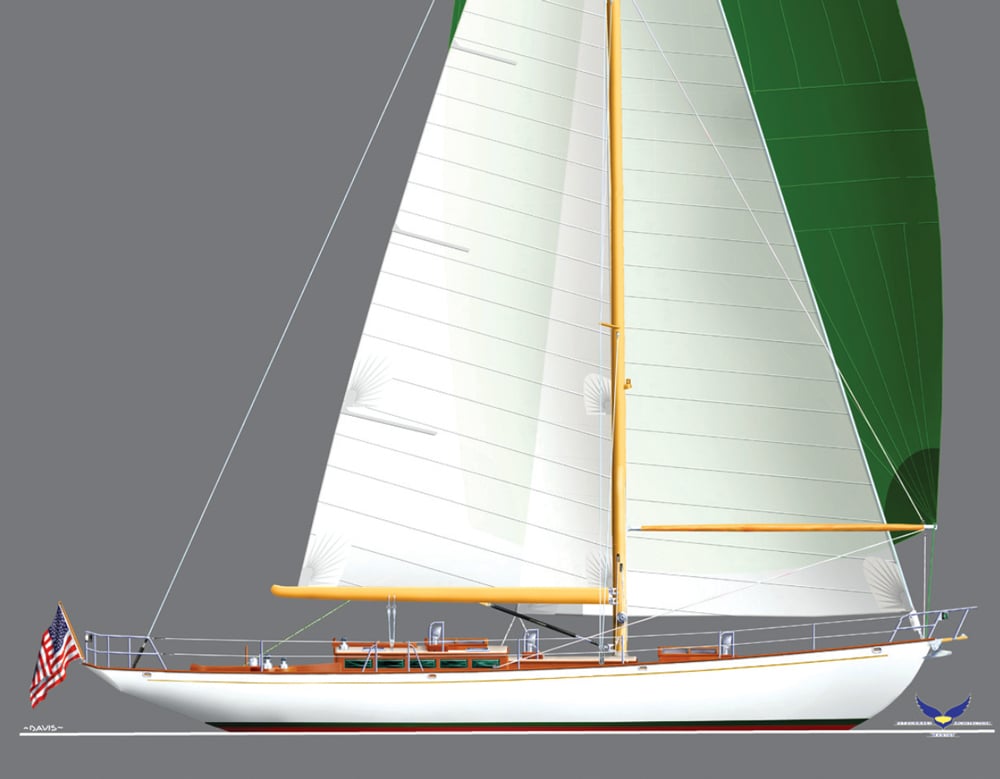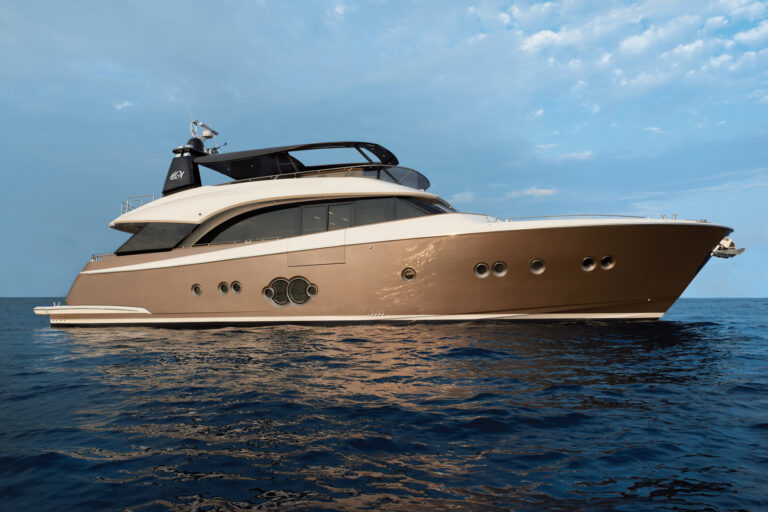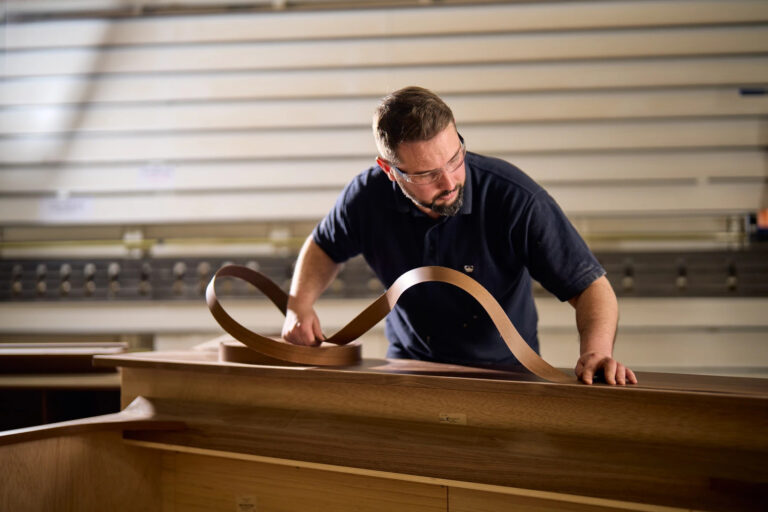
Fitzgerald 58 Classic
The Fitzgerald 58 makes me wish I were a fish so I could observe firsthand — or firstfin — the water responding to changes in the shape of this yacht’s underbody as she heels or rises and falls to the seas. This lesson in hydrodynamics appeals to me a lot more than does looking at CFD (computational fluid dynamics) images on a computer screen or watching a model dragged through a towing tank, because the lines plan — waterlines, sections and buttocks — of this yacht are every bit as lovely as the styling elements that define her appearance from the waterline up.
More important than their intrinsic value as art is what the lines mean to a yacht’s behavior and speed. The wonderfully fair waterlines of the Fitzgerald 58, which in plan view resemble a teardrop — pointy end forward — will retain their fairness as the boat heels. The absence of dramatic changes in the shape of the water plane promises to give the 58 predictable and vice-free steering on all points of sail. The generous radius at the turn of the bilge, along with substantial deadrise throughout the water plane, will give her a gentle motion in big seas, and her modest wetted-surface area will let her sail in the lightest of winds. A shallow keel, capped with a foil-shape ballast bulb, will let the boat sail to windward with her centerboard fully retracted, and permit cruising shoal waters.
Although lines are an integral part of the naval architect’s art, they have little, or no, influence on the decision to buy one yacht instead of another. Styling does that, and Mark Fitzgerald has drawn a yacht that captivates us with its delicate beauty.
“It isn’t hard to design this type of boat, aesthetically,” Fitzgerald said. “There are hundreds of perfect examples to follow.” Fitzgerald’s client wanted his yacht to have the grace and personality common to boats of the early 1900s, and he freed the designer to choose the proper styling cues. Fans of Sparkman & Stephens and William Fife likely will recognize the influence these studios had on Fitzgerald’s design. The spoon bow and elegant spring in the sheerline recall Stormy Weather, designed by Olin Stephens and launched in 1934. The overhang at the bow balances nicely with the counter stern and finely drawn curved transom. The trunk cabin — upright, cambered and low in profile — reminds us of Fife’s yachts from the same period. So does the house — a small step higher than the trunk cabin, its cambered roof bedecked with a butterfly hatch. The rectangular windows in each side of the house add light to the salon and visual interest to the entire profile. Belowdecks, mahogany joinerwork, complemented with white vertical surfaces and Edwardian-style, buttoned-leather upholstery could easily have been plucked from one of Fife’s finest.
Fitzgerald may have taken cues from two great designers, but the job of molding those into a work of art that he can call his own required a true artist’s touch. As much as we, and the client, value the art, making it work with 21st-century technology was more important. The hard part, Fitzgerald told me, was making sure that the modern technology works for average boat owners — in this case a husband-and-wife team. The clients will sail the 58 without benefit of professional crew.
As befits a classical yacht, she will be built of wood — cold-molded with epoxy resin. Her presence ought to paint a smile on the face of everyone who sees her and bring joy to the lucky few who get to sail aboard her.
Specifications
LOA: 57’10”
LWL: 41’11”
Beam: 14’5″
Draft: 5’11” (board up)
Draft: 11’7″ (board down)
Displ.: 46,500 lb.
Displ./DWL: 296 lb.
Sail Area: 1,391 sq. ft.
Sail Area/Displ.: 17.21
Power: 1 x 75-hp Volvo Penta D2 saildrive
Fitzgerald Marine Architecture Inc., 207-975-2358; markfitzmarine.com









